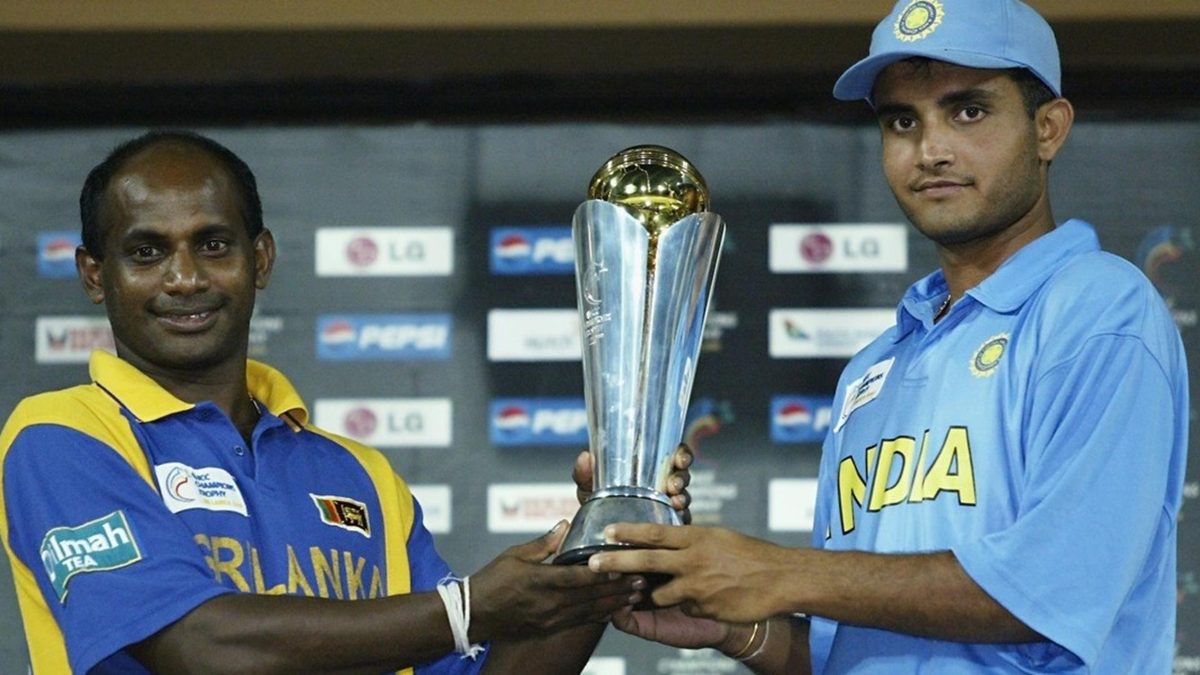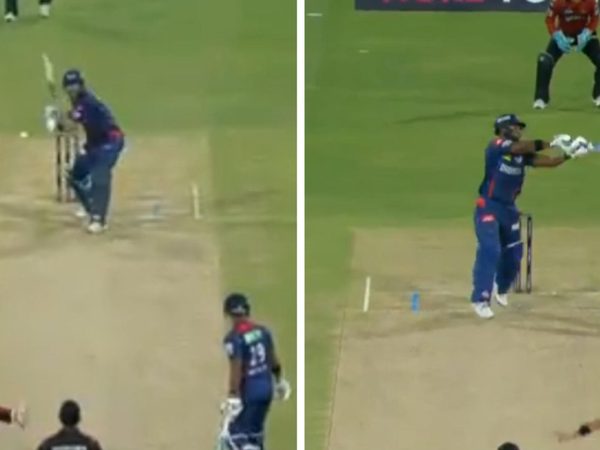
The 2002 Champions Trophy final was supposed to be a 100-over contest. It failed to produce a result after more than 110 overs of cricket.
Australia and Pakistan barely broke a sweat to pip Kenya for spots in the 2002 PSO Tri-Nation Tournament final, which had to be called off when Australia, chasing 228, were 67-1 after 9.3 overs. There was no reserve day: for the first time in the history of ODIs, a trophy had to be shared after the final was washed out.
It was perhaps too late for the organisers to make changes to the rules of the 2002 Champions Trophy, scheduled to begin only five days later in another continent. But then, all they needed to enforce was a resumption of the final in case of a rain break instead of the existing replay.
They had probably counted on the Standard Bank International One-Day Series in South Africa in early 1997 and the Coca-Cola Singapore Challenge of 1999. In both instances, the final was washed out but the replays produced results. Unfortunately, neither reserve final had to contend with the Sri Lankan monsoon.
Departure from tradition
The first three editions of the World Cup featured 60-over matches (with lunch and tea intervals), which meant that matches were likely to not produce results in a day even in peak English summers.
Some matches, thus, resumed. The most famous example of this is probably the India-Sri Lanka clash at Manchester in 1979: after a late start, Sri Lanka made 238-5 in 60 overs when play was called off. India began their chase only after a pre-scheduled rest day.
Over time, however, the organisers switched to replays. When the Zimbabwe-Kenya match at the 1996 World Cup had to be called off after 15.5 overs, they resumed from scratch the next day in Patna.
A tournament of many firsts
The Champions Trophy had started with the aim to spread the game. Accordingly, the first edition was played in Bangladesh (then an Associate Nation) and the second in Kenya. In 2002, however, it moved to a Full Member, Sri Lanka, for the first time.
The knockout format was scrapped as well. However, as only one side from each of the four group qualified for the semi-final, no team could afford to lose a game.
This was also the edition where the ICC first experimented with the DRS, though the concept would be formally introduced to international cricket until 2008.
The hundred-over farce
India came into the tournament after a long, convoluted conflict over a sponsorship logo that was sorted out at the last moment. After they overcame initial hiccups to beat Zimbabwe, they got past England comfortably before pulling off an astonishing heist over South Africa in the semi-final.
Sri Lanka, meanwhile, beat Pakistan and the Netherlands. Then, on a pitch Ricky Ponting called “too slow and turned too much for a one-day wicket,” their spinners – led by a 37-year-old Aravinda de Silva inside the powerplay – bowled out Australia for 162 and their batters pulled off a comfortable chase.
After the two semi-finals resulted in the exit of two top-quality teams, there was little doubt that a high-quality final was on the cards, more so as both teams were familiar with the conditions.
As Ashish Nehra split a webbing, India flew out Javagal Srinath, who was then playing for Leicestershire. To play Srinath (along with Zaheer Khan and Ajit Agarkar) ahead of Anil Kumble was a curious choice. They probably regretted the decision after Harbhajan Singh picked up 3-27 in 10 overs, while Virender Sehwag bowled his full quota for only 32. They held Sri Lanka to 244-5 after they had been 155-1 in the 31st over with Sanath Jayasuriya and their young wicketkeeper Kumar Sangakkara at the crease.
Of their three openers, India used only Sehwag at the top, along with Dinesh Mongia. Sourav Ganguly held himself and Sachin Tendulkar back, presumably because of their experience in the conditions. Sehwag began well, picking up three fours in the second over, bowled by Pulasthi Gunaratne. At 14-0 after two overs, India seemed on their way.
Then it rained... and play did not resume for the day. When cricket eventually got underway the day after, the match had to be replayed. In other words, the 52 overs of cricket that had already been played went to waste.
This time, India picked Kumble for Srinath. Jayasuriya played on to the stumps off the first ball – the first time in ten innings that he failed to cross 35 – before de Silva hit six fours in his 27 in his last innings on home soil. Mahela Jayawardene and Russel Arnold got fifties, and Sri Lanka finished on 222-7.
The India spinners (Tendulkar bowled spin here) had bowled 32 of the 50 overs. The India openers knew that they had to go after the new ball before the army of home spinners would come on. Mongia fell for a duck, but Sehwag got quick runs, and the match continued for some time amidst lightning and thunderstorm. It was only a matter of playing 20 overs, after all.
Unfortunately, they never got there. Steve Bucknor and David Shepherd walked off after 8.4 overs, with India on 38-1. They made periodic appearances, but in vain. The trophy had to be shared.
A total of 110.4 overs had been played across the two days. Had the match resumed on the second day, all it needed was 18 overs of cricket (India had faced two overs on the first day).
Ironically, 52 overs of cricket were played on the first day. There were another 58.4 overs on the reserve day, amounting to a total of 110.4 overs — 64 balls more than a regular ODI.
The ICC was predictably criticised. “It doesn’t make any sense,” said Farokh Engineer. “They should look at that rule straight away and change it. The obvious thing is to continue from where they left off.”
ICC media spokesperson Brendan McClements later defended the replay, calling it “by far superior to anything else, including playing a game from where it finished the night before. That simply cannot work effectively.”
It is difficult to tell who would have won that day, but McClements’ claims could well have turned out to be hollow after the 2003 World Cup. Having amassed 359-2, Australia had India at 103-3 after 17 overs when it rained. The match resumed, but had it not, a replay would have reduced Australia’s advantage significantly.
What followed?
Shortly after that World Cup final, India and South Africa faced an encore of the Champions Trophy at the TVS Cup in Bangladesh. This time, only 17.1 overs of cricket was possible over two days – and the trophy had to be shared.
Over time, the ICC moved on from McClements’s claims and introduced resumptions for knockout matches. In a curious way, that led to a fiasco at the 2007 World Cup final, resulting in the match officials being penalised – but that is another story.








